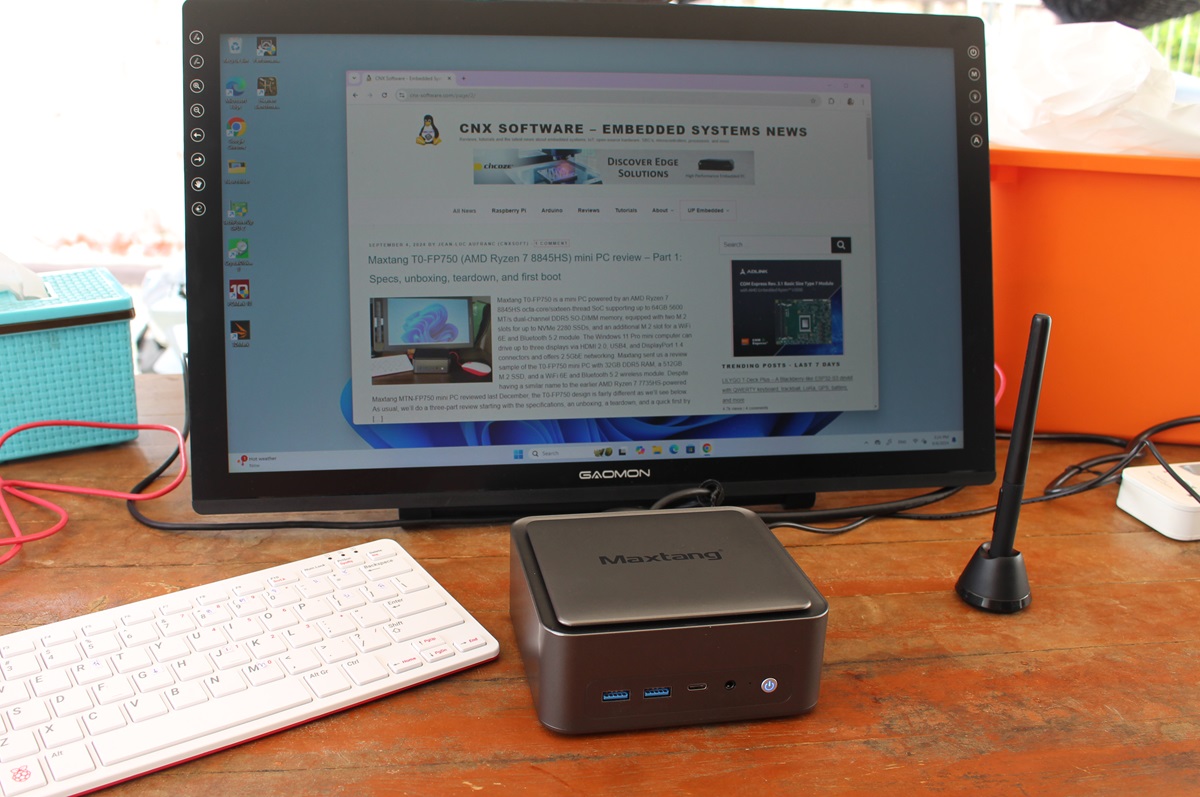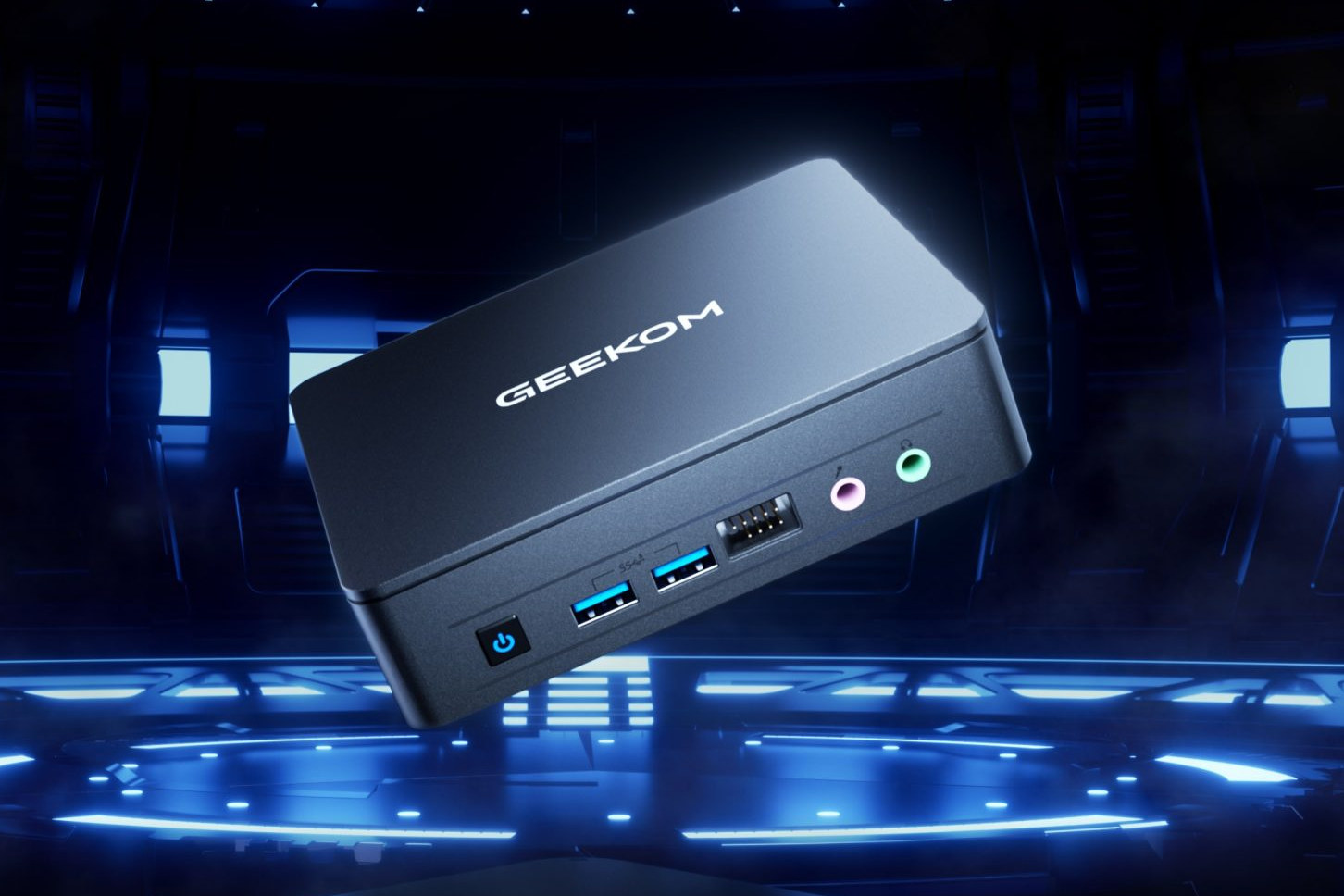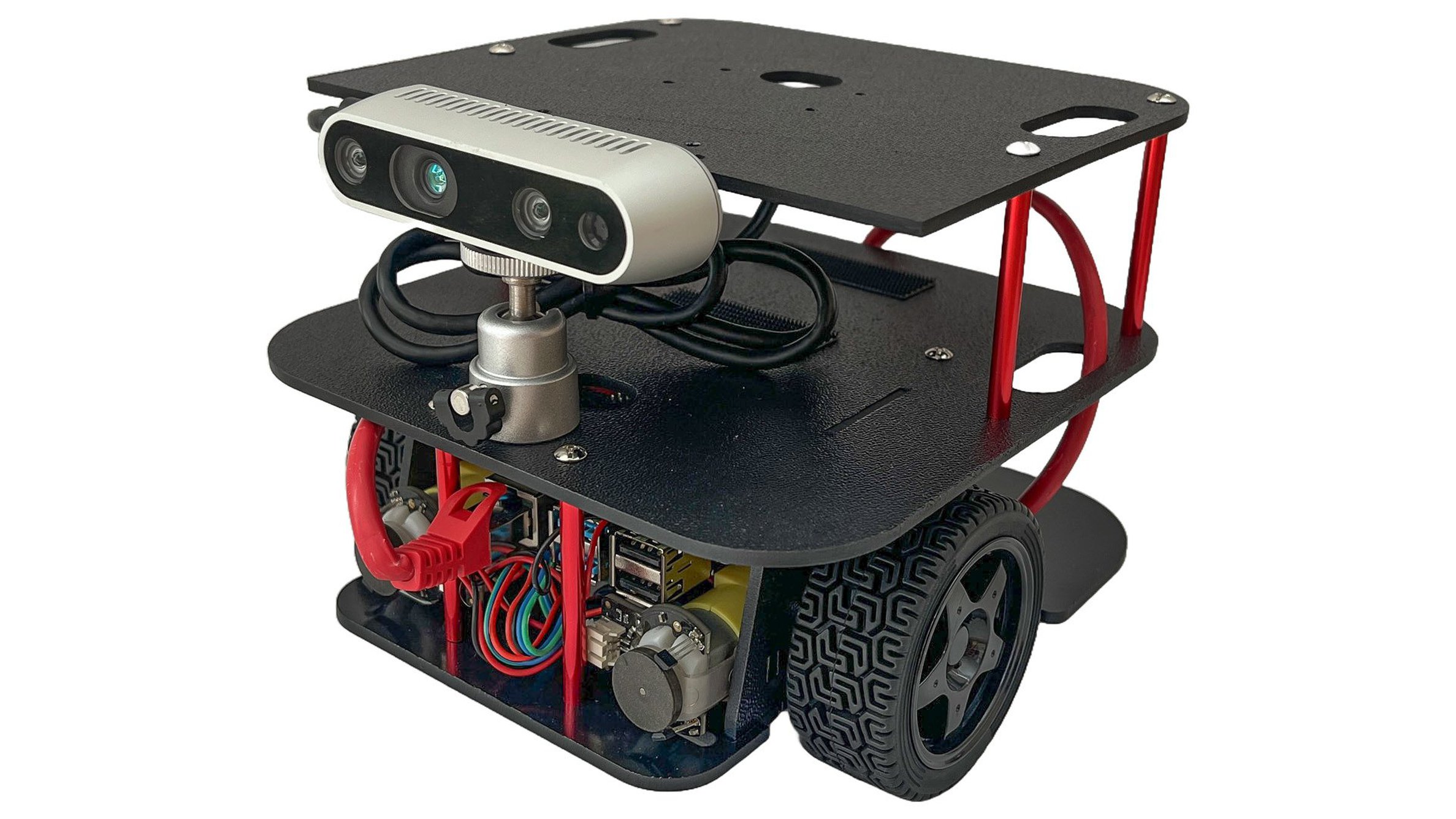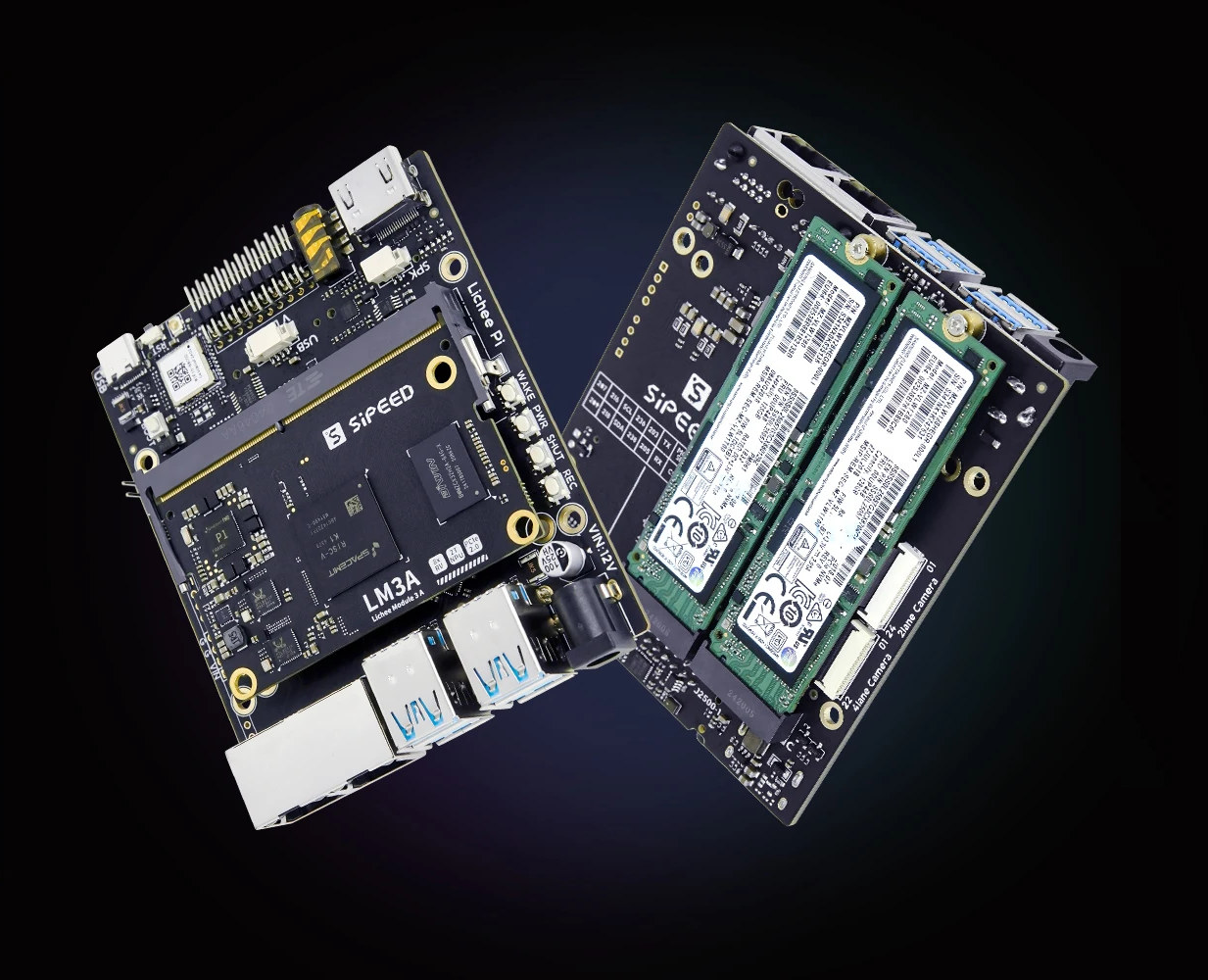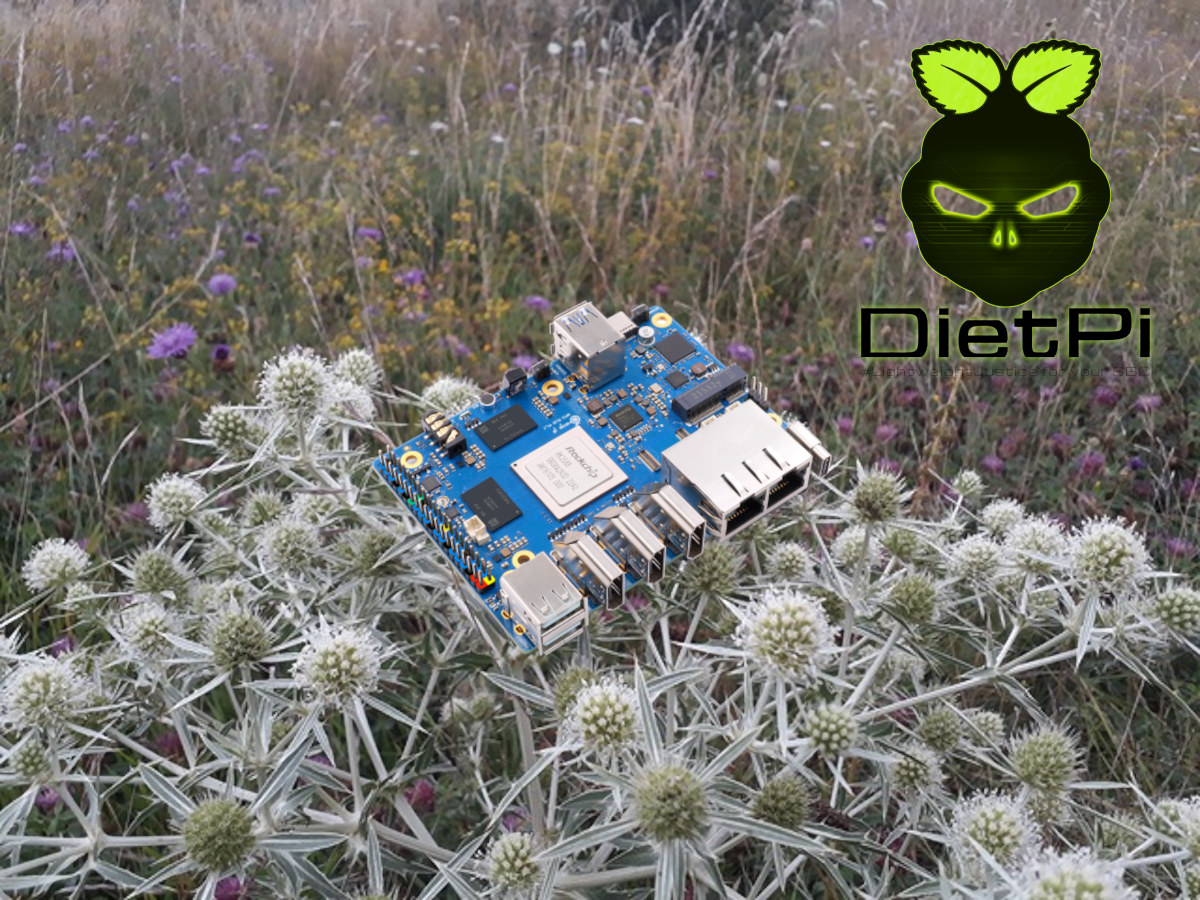We already listed the specifications and performed an unboxing and a teardown of the Maxtang T0-FP750 mini PC in the first part of the review. We’ve now had time to test the AMD Ryzen 7 8845HS mini PC in more detail with the Windows 11 Pro operating system. So in the second part of the review, we’ll report our experience with the Maxtang T0-FP750 in Windows 11 Pro with a software overview, features testing, benchmarks, networking and storage performance, cooling performance, and measurement of fan noise and power consumption. Software overview and features testing The System->About menu confirms we have an “FP750” Mini PC powered by an AMD Ryzen 7 8845HS processor clocked at 1.80 GHz (base frequency) with Radeon 780M Graphics, equipped with 32 GB RAM, and running Windows 11 Pro 23H2, OS build 22631.4112. HWiNFO64 provides additional details about the AMD Ryzen 7 8845HS 8-core/16-thread processor, the Maxtang […]
GEEKOM Mini Air12 Lite Intel N100 mini PC comes with a 9-pin expansion header
GEEKOM Mini Air12 Lite is yet another Intel Processor N100 mini PC whose main differentiating feature is a 9-pin expansion header accessible from the outside for expansion. I initially thought it would be similar to having Raspberry Pi 5 SBC in an enclosure like the Pironman 5, but as we’ll see below it may not exactly be the case. As its name implies, it’s also an evolution of the Mini Air12 mini PC with a lower price due to some cost-cutting. The Mini Air 12 Lite notably ships with 8GB DDR4-3200 and a 256GB NVMe SSD, instead of the 16GB DDR5-4800 and a 512GB NVMe SSD for its older sibling. The computer also features HDMI and DP ports for dual display setups, gigabit Ethernet and WiFi 5 connectivity, an audio jack, and five USB 3.2/2.0 ports. GEEKOM Mini Air12 Lite specifications: SoC – Intel Processor N100 Alder Lake-N quad-core/quad-thread processor […]
MIKRIK V2 Robot Car is an entry-level, open-source robotics kit built for ROS and 3D computer vision
The MIKRIK V2 Robot Car is an open-source robotics kit for studying 3D computer vision and is compatible with both ROS1 and ROS2 software suites. The two-wheel-drive robot is powered by a Raspberry Pi 4 Model B (as a ROS1 differential drive controller) and a more powerful x86 or ARM single-board computer that can support ROS2 applications like the LattePanda Delta 3, Intel NUC, or NVIDIA Jetson Nano. The robot car uses the Intel Realsense D435i camera for 3D depth vision. It is a less expensive alternative to the iRobot Create, Husarion, and TurtleBot, and compares favorably with NVIDIA’s open-source JetBot AI robot platform. The robot car’s chassis is squared-off and made from shatterproof flex plastic. The CAD files are available on GitHub for self-assembly using a laser cutter and a 3D printer. The assembly and setup process is documented on the Hackster project page. On the software end, it […]
LicheePi 3A – A SpacemIT K1 RISC-V development board with SoM and carrier board
Sipeed LicheePi 3A is a development board comprised of the LM3A system-on-module based on SpacemIT K1 octa-core RISC-V SoC and the same baseboard as found in the earlier LicheePi 4A equipped with a T-Head TH1520 quad-core RISC-V “LM4A” system-on-module instead. The LicheePi 3A is currently offered with a 32GB eMMC flash and 8GB or 16GB LPDDR4x memory. The carrier board provides a microSD card, two M.2 PCIe sockets for storage or other expansion, two gigabit Ethernet ports, a WiFi 6 and Bluetooth 5.2 module, HDMI and MIPI DSI display interfaces, two MIPI CSI camera interfaces, four USB 3.0 ports, and a 20-pin GPIO header for expansion. Sipeed LicheePi 3A specifications: Sipeed LM3A SoM SoC – SpacemiT K1 CPU – 8-core X60 RISC-V processor @ 1.6 GHz GPU – Imagination IMG BXE-2-32 with support for OpenGL ES3.2, Vulkan 1.2, OpenCL 3.0; 20 GFLOPS VPU – H.265 and H.264 1080p60 decoding/encoding NPU […]
Android 15 source code pushed to AOSP
Android 15 will only become available on supported Pixel devices in the coming weeks, and on other phones in the next couple of months, but Google has already pushed Android 15 source code to AOSP (the Android Open-Source Project). We already documented some of the main changes in Android 15 when the first developer preview was released in February 2024. These included improvements related to privacy and security, the addition of the partial screen-sharing feature, camera and audio improvements, and some performance optimizations. You should be able to retrieve the Android 15 source code from AOSP with the following commands:
|
1 2 |
repo init --partial-clone -b android-15.0.0_r1 -u https://android.googlesource.com/platform/manifest repo sync -c -j8 |
Android 15 is based on Linux 6.6 LTS, so Android 15 SDKs from silicon vendors will likely be offered with Linux 6.6, although I can see Linux 6.1 is also an option. It’s also possible to browse Android 15 source code without downloading several GB of data to your […]
Maxtang T0-FP750 (AMD Ryzen 7 8845HS) mini PC review – Part 1: Specs, unboxing, teardown, and first boot
Maxtang T0-FP750 is a mini PC powered by an AMD Ryzen 7 8845HS octa-core/sixteen-thread SoC supporting up to 64GB 5600 MT/s dual-channel DDR5 SO-DIMM memory, equipped with two M.2 slots for up to NVMe 2280 SSDs, and an additional M.2 slot for a WiFi 6E and Bluetooth 5.2 module. The Windows 11 Pro mini computer can drive up to three displays via HDMI 2.0, USB4, and DisplayPort 1.4 connectors and offers 2.5GbE networking. Maxtang sent us a review sample of the T0-FP750 mini PC with 32GB DDR5 RAM, a 512GB M.2 SSD, and a WiFi 6E and Bluetooth 5.2 wireless module. Despite having a similar name to the earlier AMD Ryzen 7 7735HS-powered Maxtang MTN-FP750 mini PC reviewed last December, the T0-FP750 design is fairly different as we’ll see below. As usual, we’ll do a three-part review starting with the specifications, an unboxing, a teardown, and a quick first try […]
DietPi 9.7 and Armbian 24.8 released with improved support for Rockchip, Amlogic, and Allwinner SBCs
Armbian and DietPi are two separate projects that provide Linux-based OS images optimized for Arm-based single board computers. The last time we had a look at both projects was in June with the release of Armbian 24.5.1 and DietPi 9.4, but there have been several updates since then including the releases of the latest DietPi 9.7 and Armbian 24.8 Yelt just a few days ago. So let’s check out the latest changes. DietPi 9.7 DietPi is a lightweight Debian-based Linux distribution for SBCs and server systems that ships as a minimal image but users can install any packages they want, including the ones required for desktop environment, to match the requirements of the applications. It’s notably used by the Linamp project – a Raspberry Pi 4-based project that brings WinAMP to real life – that we covered a few weeks ago. DietPi 9.7 was released on August 25, 2024 with […]
Vecow EVS-3000 AI computing systems combine 14th Gen Intel Core CPUs and MXM Graphics for Edge AI applications
Vecow has introduced the EVS-3000 series, a new line of AI computing systems powered by Intel Core i9/i7/i5/i3 (14th Gen) processors with embedded MXM graphics. These systems deliver high computing power, come with multiple PCIe slots for expansion, and support remote monitoring making them ideal for edge AI applications such as autonomous robotics, public security, and machine vision. The EVS-3000 series includes both fan and fanless models: EVS-3100, EVS-3200, EVS-3300, EVS-3400 without fans, and EVS-3100(F), EVS-3200(F), EVS-3300(F), EVS-3400(F) with fans. All systems are powered by Intel R680E chipsets and feature compact NVIDIA or AMD MXM graphics, with support for 2.5GbE LAN, Out-of-Band (OOB) management, and multiple PCIe Gen 4 slots. These systems deliver high performance for AI computing at the edge for applications such as machine vision and robotics. As you may know, we’ve previously covered several Vecow AI computing systems, including the TGS-1000 Series, SPC-9000 fanless embedded system, ECX-3200, […]


